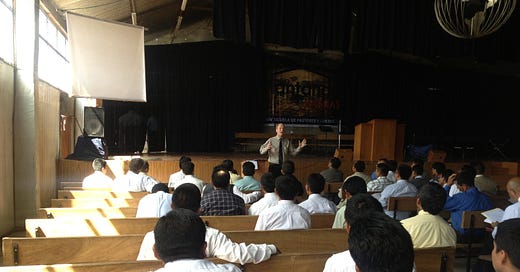Training leaders of leaders
Most missionaries go with a pastor mentality instead of a missionary mentality.
World Evangelism is currently facing a significant challenge. However, the focus of this study is to shed light on the promising potential of life-on-life leadership training. What makes this approach so interesting? Let’s explore its advantages over the current mission work, particularly in contrast to the innovative life-on-life approach.
At best, most missionaries can establish one church in one term, a process that often takes longer. This raises the question: if a missionary can only establish one church or a few dozen people in one term, wouldn’t it be more efficient to support a national who can achieve similar results for less effort? The term’ leader of leaders’ refers to someone who can identify and train others to do the work, thereby multiplying the efforts and achieving the goal of planting churches in a more efficient manner.
Most missionaries can start and leave very few indigenous churches during their missionary career. The majority will have to leave their work with a North American missionary when they return to the States on furlough. They can get the people together and have everything that looks like a church but cannot have trained leadership to carry on the work. It is essential to consider the contrast between training leaders and being a regular church planter. Most missionaries go with a pastor mentality instead of a missionary mentality. They want to reproduce what they had back home but do not know how to go from there to having a national pastor to take the work.
Imagine a Church Planter who can establish a new church every year. This means engaging in door-to-door evangelism, winning souls, securing a meeting place, training the congregation in faithfulness, tithing, prayer, preaching, and all the other aspects of church life, and then finding a pastor before moving on in just 365 days. Such a Church Planter would not only be outperforming most today’s missionaries, but also inspiring a fresh wave of mission work.
If he could consistently continue this ministry and take care of his family simultaneously, he could start and leave only 32 churches in a typical missionary lifetime. That means he started planting churches at age 25 and continued until 65, taking a furlough every five years (4 years on the field and then one on furlough). Consider that—32 churches. If they become self-supporting, self-governing, and self-propagating, they will have served a much longer purpose than most modern missionaries. Almost anyone with any mission field experience will realize that this is nearly impossible, if not impossible. Those of you who live in the states show me any church planter in North America that has ever accomplished a similar feat in the States with all the North American church’s advantages.





